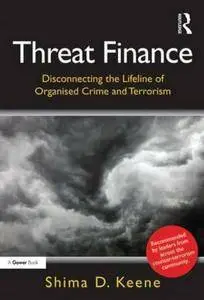Threat Finance: Disconnecting the Lifeline of Organised Crime and Terrorism by Shima D. Keene
English | 2012 | ISBN: 140945309X | 328 pages | PDF + EPUB | 3 + 2 MB
English | 2012 | ISBN: 140945309X | 328 pages | PDF + EPUB | 3 + 2 MB
Criminal and terrorist organisations are increasingly turning to white collar crime such as fraud, e-crime, bribery, data and identity theft, in addition to more violent activities involving kidnap and ransom, narcotics and arms trafficking, to fund their activities and, in some cases pursue their cause. The choice of victims is global and indiscriminate. The modus operandi is continually mutating and increasing in sophistication; taking advantage of weaknesses in the system whether they be technological, legal or political. Countering these sources of threat finance is a shared challenge for governments, the military, NGOs, financial institutions and other businesses that may be targeted. Shima Keene’s Threat Finance offers new thinking to equip any organisation regardless of sector and geographical location, with the knowledge and tools to deploy effective counter measures to tackle the threat. To that end, she brings together a wide variety of perspectives - cultural, legal, economic and technological - to explain the sources, mechanisms and key intervention methodologies. The current environment continues to favour the criminal and the terrorist. Threat Finance is an essential read for fraud and security practitioners, financial regulators, policy-makers, intelligence officials, judges and barristers, law enforcement officers, and researchers in this field. Dr Keene offers an antidote to the lack of good, applied, research; shortcomings in in-house financial and forensic expertise; misdirected financial compliance schemes; legal and judicial idiosyncrasies; unhelpful organisation structures and poor communication. She argues convincingly for a coherent, aggressive, informed and cross-disciplinary approach to an ever changing and rapidly growing threat.



